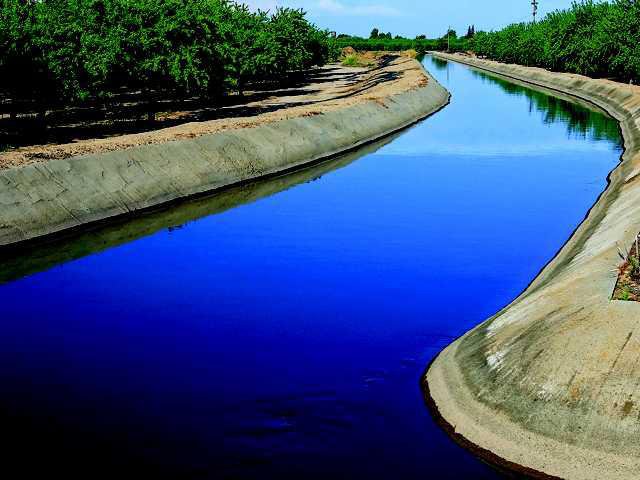Storms. Rising reservoirs. Weeds growing like crazy.
It looks like California is coming out of the drought.
But as South San Joaquin Irrigation District General Manager Peter Rietkert knows looks can be deceiving.
It is why his bosses on the SSJID board — while easing up a bit on water delivery restrictions imposed last year — have adopted a water conservation program for 2016.
Farmers will get 40-inch allotments — up 4 inches from last year. The cities of Manteca, Lathrop and Tracy will see a corresponding increase in water they are allotted. The three cities have been operating with 20 percent less water from SSJID for the past three years.
All three cities have cut water use by about 30 percent over 2013 levels. Farmers using SSJID water have basically matched that effort by exceeding state expectations made at one point that the farm sector reduce water use by 25 percent.
“Our growers have done a great job saving water as have the cities,” Rietkerk said.
The agricultural community has gotten a big help from SSJID with its ongoing funding of water conservation technology at the growers’ level to cutting edge investments such as the District 9 pressurized system that has been reducing water use by 12,000 acre feet annually while crop yields at the same time have increased.
SSJID expects to get its full allotment from the snow melt this year. That said they are looking cautiously toward 2017 with an eye on building up the district’s water storage conservation account at New Melones Reservoir in the event next year ends up being dry. Historically, data shows it isn’t unusual for a wet year or two to interrupt a drought cycle before precipitation drops again significantly. Scientists have noted that the last 200 years or so have been an aberration of sorts for the West based on tree ring studies. Before that, droughts spanning 50 years were common with one or two years where they were interrupted by normal or wetter than normal years.
Also, New Melones — the state’s fourth largest reservoir — hasn’t bounced back as well as others.
While snowfall is up significantly on the Stanislaus River watershed it trails that in much of the north state. Shasta Lake with a capacity of 4.5 million acre feet making it California’s largest reservoir is at 80 percent capacity. Meanwhile New Melones is at 24 percent. New Melones can hold 2.4 million acre feet of water.
WATER PICTURE BRIGHTENS
SSJID warns conserving still essential as cushion for 2017 needs





